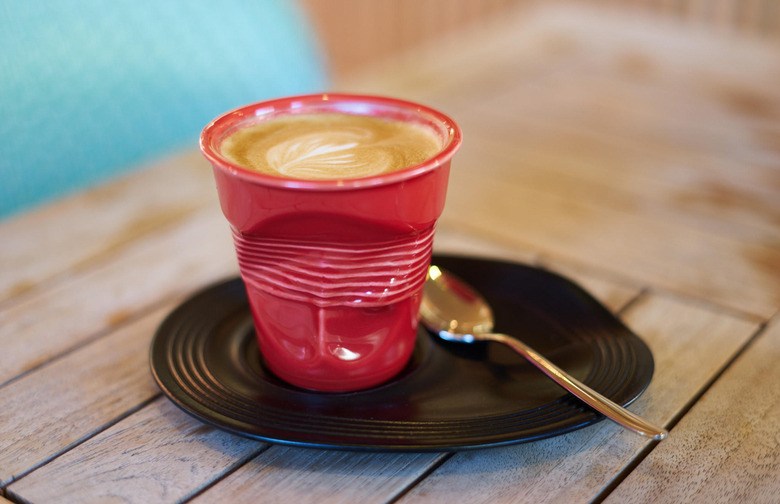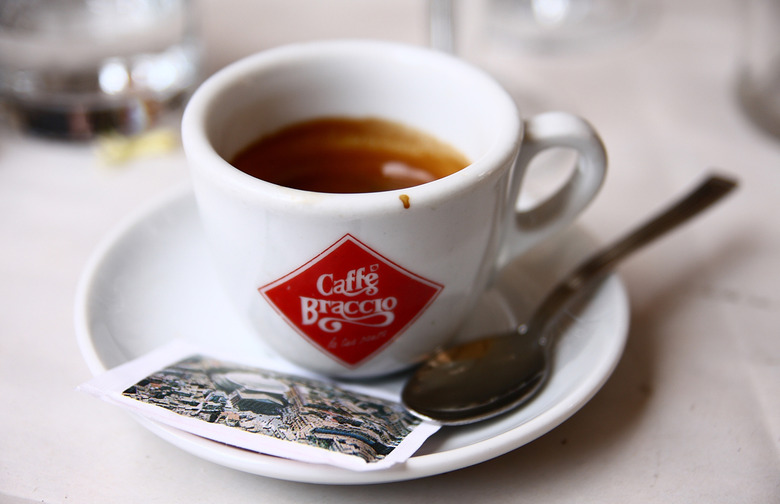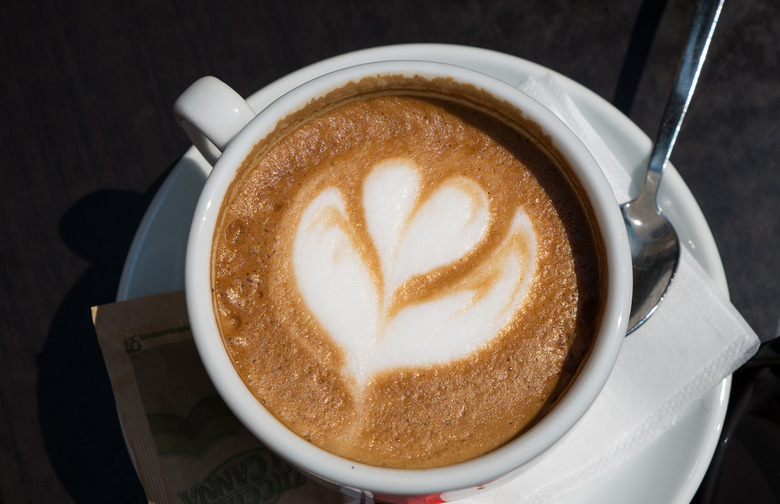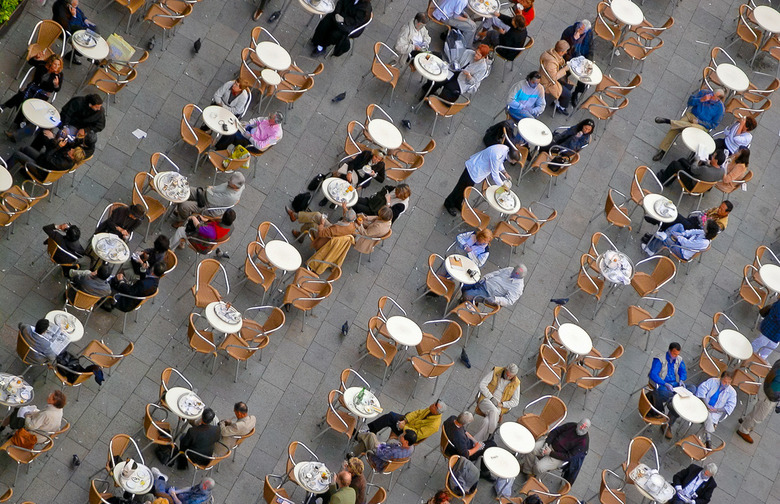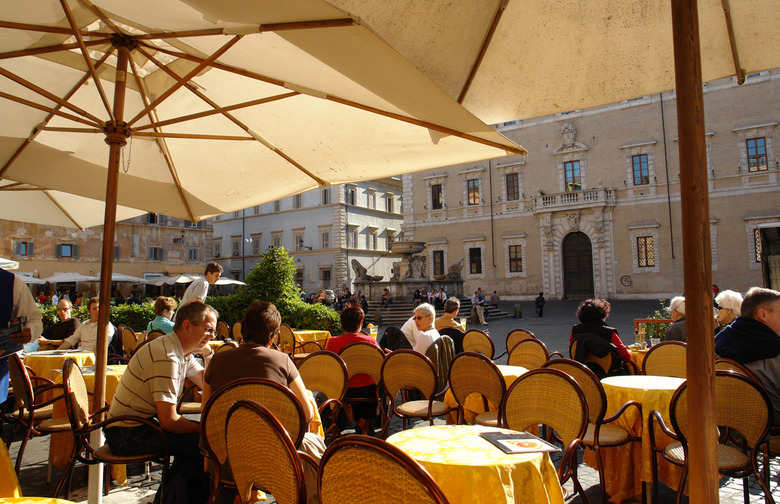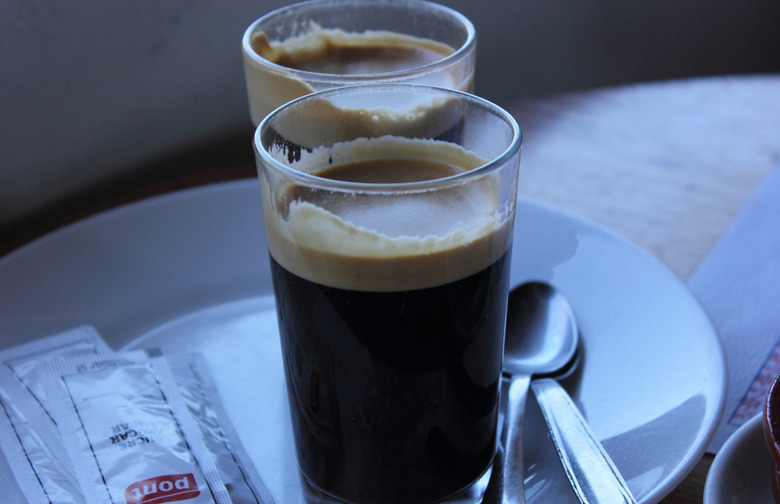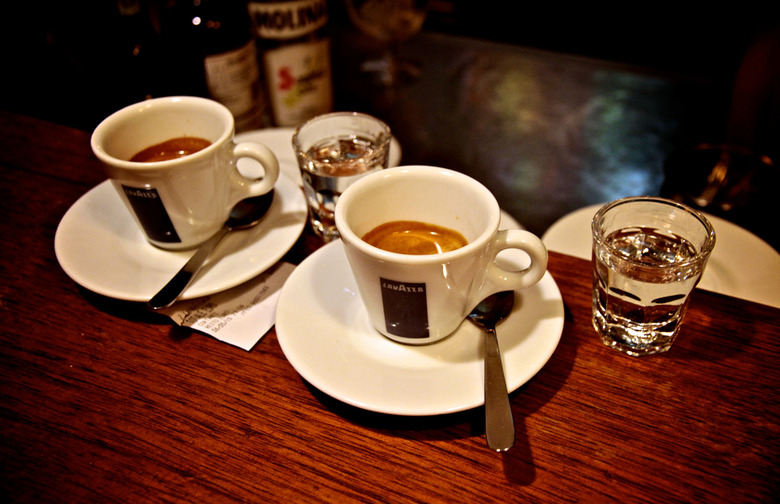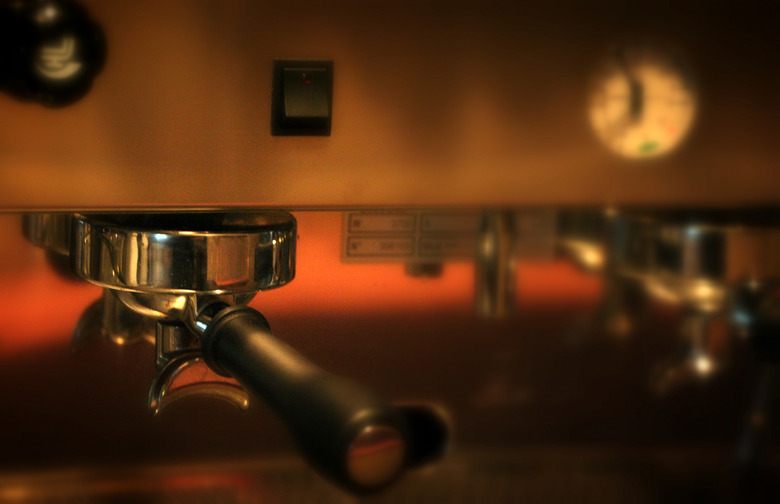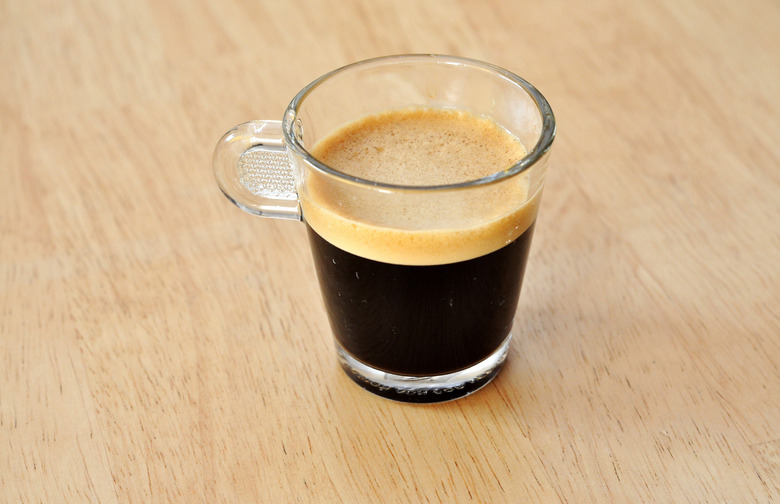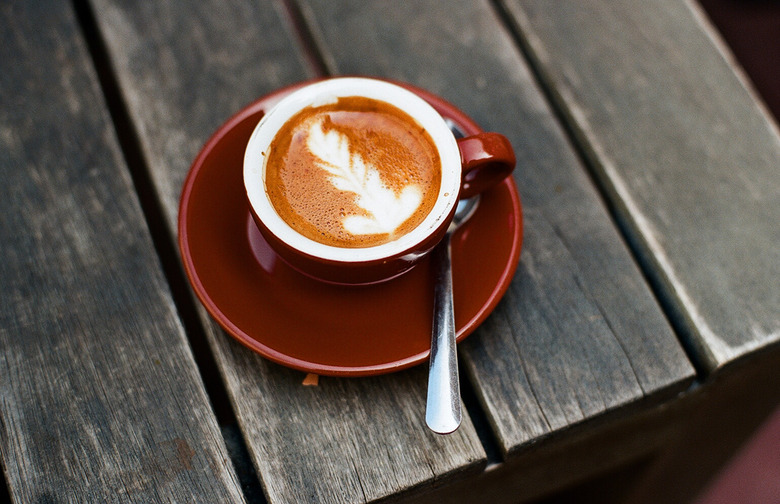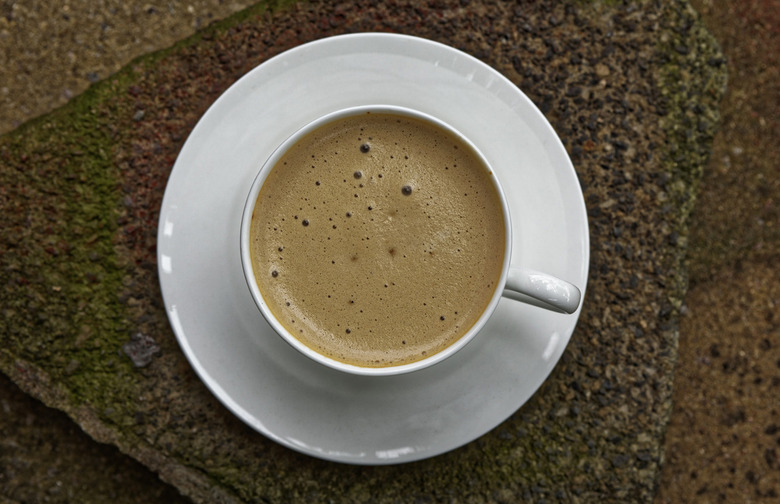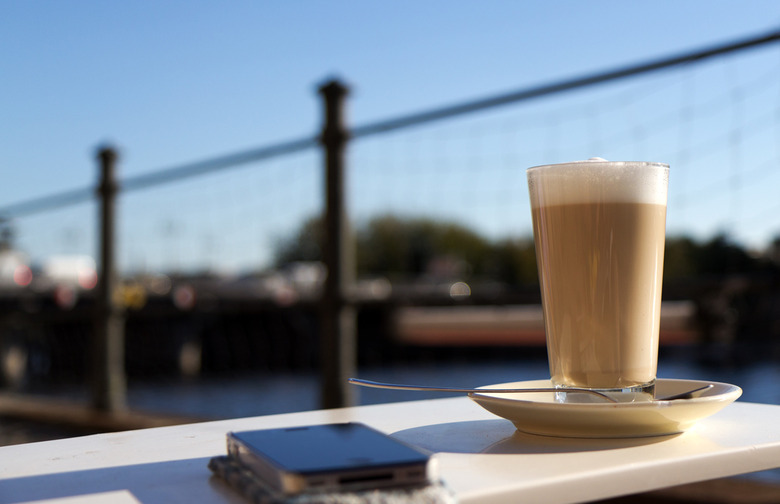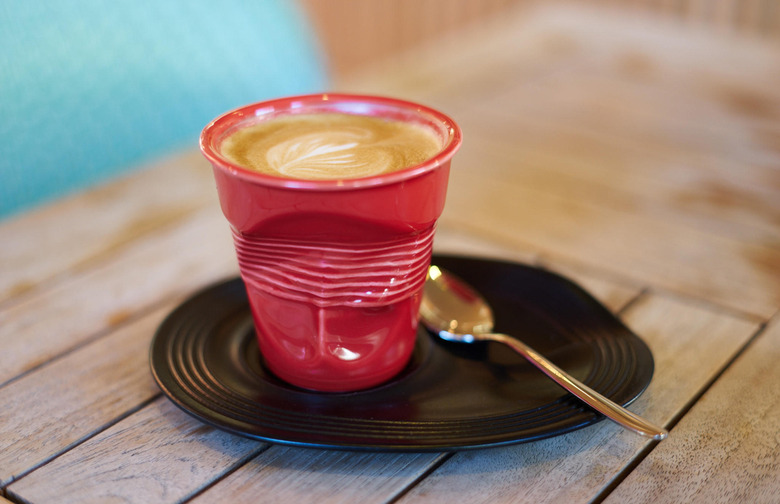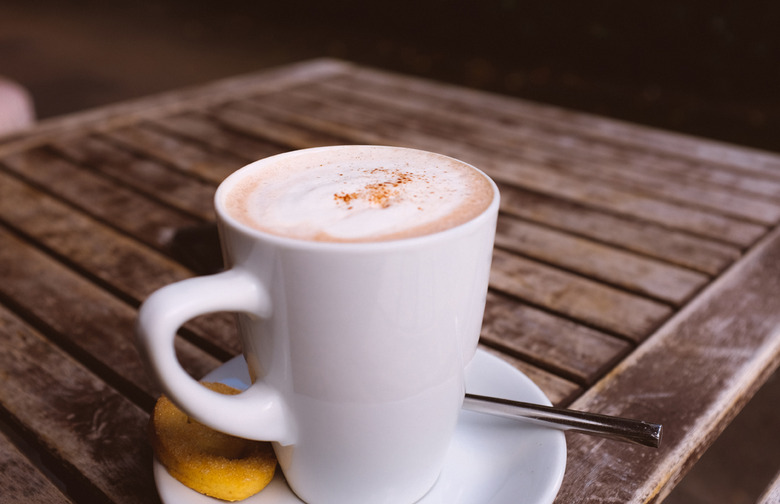14 Things You Need To Know About Ordering And Drinking Coffee In Italy
Never forget that, as in fashion, design, cooking, and, yes, coffee, in Italy, non è la quantità ma la qualità — it's quality rather than quantity that matters. From the beans to the coffeehouse décor and the porcelain cups for each precious drop, Italians never stint on the experience.
While their sophisticated ease of ordering and imbibing may seem second nature, Italian coffee culture isn't a recent phenomenon. It's a practiced set of traditions and rituals that have evolved over four centuries, beginning in Venice. Coffee came to this ancient Mediterranean city-state via trade with Muslims in the sixteenth century; according to a report to the senate prepared by Gianfranceso Morosini in 1585, the ambassador to Constantinople, coffee was already available in the city.
To make sure you don't misstep, here are some things you need to know about ordering and drinking coffee in Italy.
Ordering
There are two kinds of coffee places in Italy: coffee shops and coffee houses. The first place is where you can dash in for a quick caffè and dash out again mid-morning or late afternoon and be back at your desk quickly. Coffee houses are the bastions of style that encourage people watching, intellectual conversations, and rubbing elbows with a wide swath of society. The quick coffee shop is also where you pay first for your caffè, while at the coffee house payment is made after you enjoy your drink.
The Dos and Don’ts
Never order a cappuccino or latte after noon; they aren't served and if you do order one you will either be scoffed at or be served a glass of hot milk. Please don't order a cappuccino or latte with any meal. Most restaurants don't serve them, and they are only served with breakfast. If you need a fix, order un caffè at the end of lunch or dinner.
If you must have a coffee pick-me-up mid-morning, or in the afternoon, order either un caffè or macchiato, a "stained" coffee, marked with a drop of milk. These are acceptable after the noon hour. For a treat without the high octane, try a decaffeinato, or decaf espresso; it isn't as easy to find, but a kind barista may oblige if you ask nicely.
Espresso 101
Italians don't call an espresso "espresso." It's called simply "caffè," and if properly served, arrives in a tiny porcelain cup as a very short shot topped with caramel-colored foam or crema, and it's accompanied by a glass of water to cleanse the palate and remove the scent of coffee from your breath. While you may be tempted to approximate American coffee habits by ordering a doppio (an espresso with two shots), it's not a good idea and is generally considered akin to gluttony.
America Drinks It Differently
Accept that you won't be served gargantuan paper cups of complicated coffee drinks. In Italy — unless you eventually end up in one of the Starbucks stores that is finally reportedly about to open in Italy. it is not acceptable to walk around in public drinking coffee from a paper cup, either. Even when they are dashing in and out for a quick caffè, Italians don't subscribe to the idea of coffee on-the-go.
Common Coffee Styles
There are a few types of common coffee styles you will want add to your vocabulary list, depending on the time of day and style of shop. They are un caffè latte, un latte macchiato, ristretto, Americano, lungo, schiumato, and corretto.
Americano
A coffee that is made with extra hot water to reduce its strength.
Corretto
Literally a "corrected" coffee, enhanced with a shot of liqueur or spirit like sambuca, amaretto, or grappa.
Lungo
A lungo is a long coffee — a slightly watered down caffè.
Ristretto
A "short" one; a small shot of strong black coffee.
Schiumato
This is similar to a macchiato, but only with the addition of milk foam. Also acceptable in the afternoon.
Un Caffè Latte
Similar to a cappuccino, but weaker and with more milk. Acceptable at breakfast.
Un Latte Macchiato
Hot or cold milk with a drop of coffee; , but acceptable later in the day.
Sampling Coffee From City to City
If you are lucky enough to sample coffee in different cities on the peninsula, here are a few to consider:
- In Naples, order a caffè sospeso. It's the Neapolitan tradition of paying it forward that has spread to 19 countries. It means "suspended coffee" and is the custom of paying for two coffees, drinking one, and leaving the other for a less fortunate stranger to enjoy, for free. Or try a coffee infused with hazelnut.
- The Trentino region lies close to Austria, so in the regional capital of Trento or vicinity, sample a cappuccino viennese for a frothy cup of coffee flavored with cinnamon and chocolate.
- The Phoenicians and Greeks left their mark on the cuisine and culture of Sicily, but so did the Moors, from North Africa. If you go, enjoy a caffè d'u parrinu, which is an Arabic-style drink of thick coffee flavored with cocoa, cinnamon, and cloves.
- The powerful trading city of Genoa has its own version of espresso, called un genovese, which is a miniature cappuccino served in a tiny cup.
Drinking
The first coffee of the morning in Italy is not what we call an espresso; it is a moka, not to be confused with the American use of mocha to describe a chocolate-flavored drink. Moka is a lighter style of coffee that relies on a blend of beans that has a higher percentage of arabica versus robusta beans. It is easily made in what is called a machinetta, made famous by the Bialetti company. This silver pot is used around the world to make the perfect cup of morning coffee or caffè and is still the stand by which all others are measured.
Unlike in American coffee houses, in Italy caffè is never served boiling hot. The temperature is moderated so it can be quickly drunk and guests can continue the rest of their day. And it is always served in a porcelain cup. Don't look for large sugar dispensers for your cuppa; Italians rarely if ever add sugar to their caffè — the natural sweetness and flavor of the coffee and its crema are satisfying on their own — but if they do, it comes in small individual packets.
